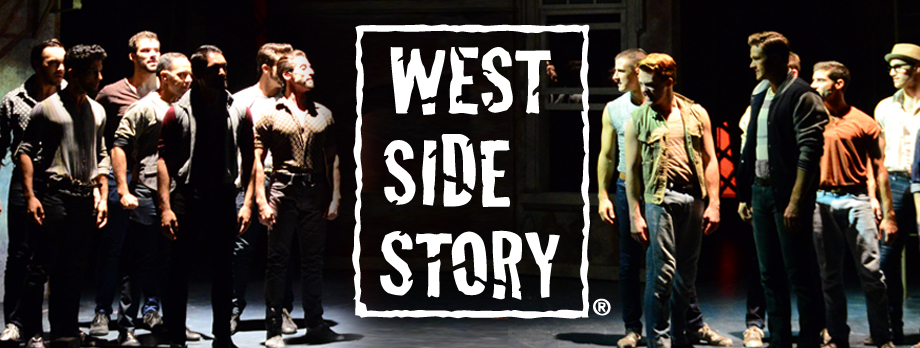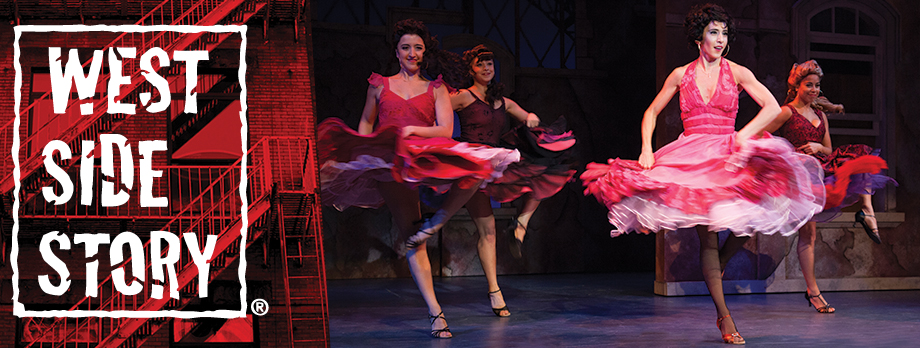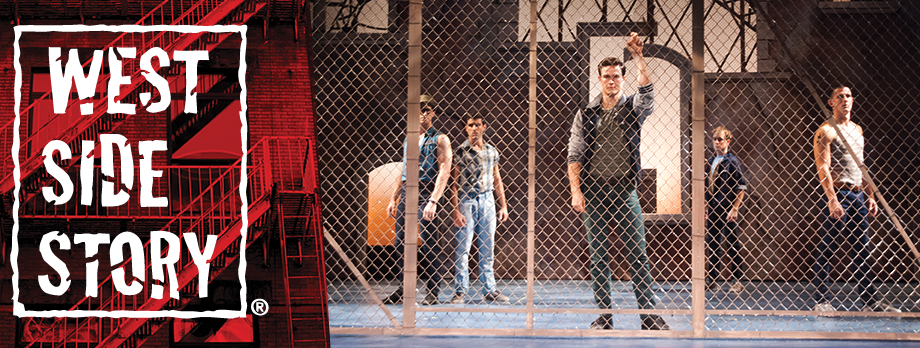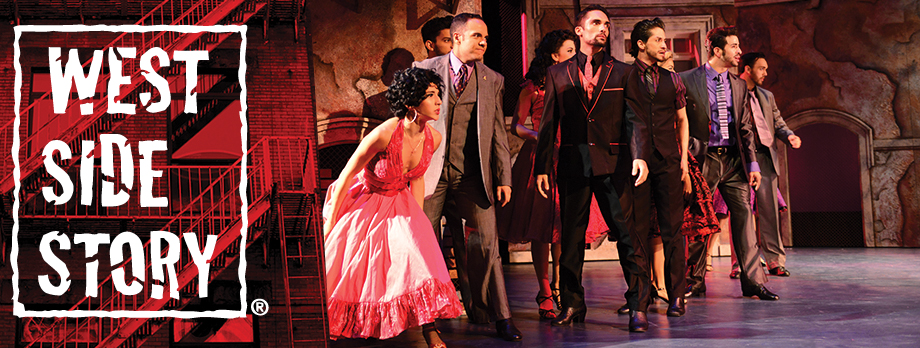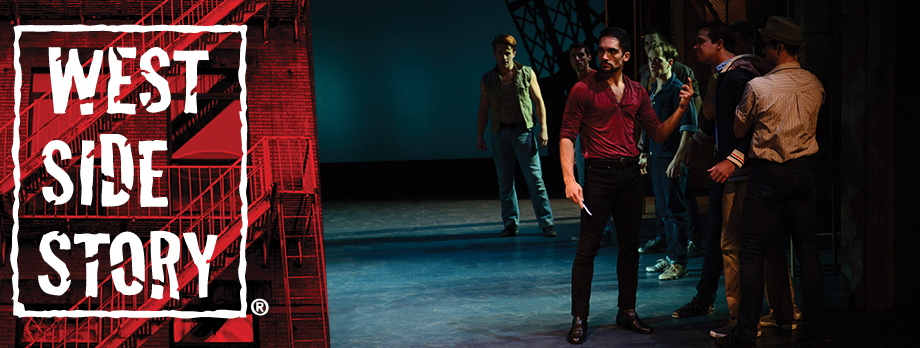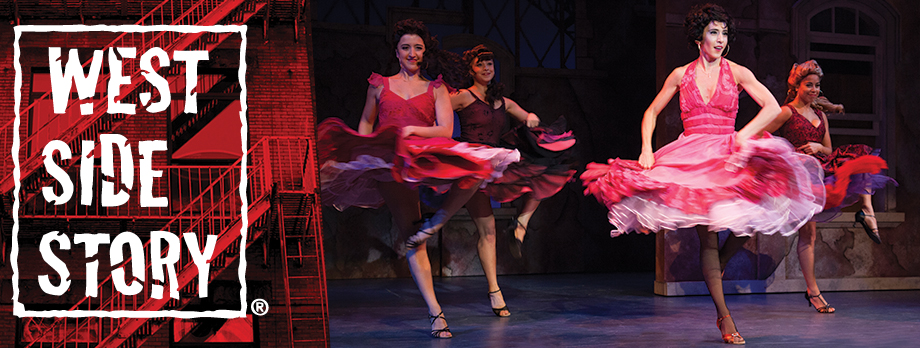about
The original production of West Side Story began in 1949 when director and choreographer Jerome Robbins approached composer Leonard Bernstein and playwright Arthur Laurents to collaborate on a modern interpretation of Romeo and Juliet. The initial concept (then titled East Side Story) centered on adapting Shakespeare’s classic into a musical set on the Lower East Side of Manhattan, with doomed lovers from feuding Irish Roman Catholic and Jewish families. The idea failed to mesh as the three men soon realized the central theme was already going out of style and they abandoned the project for the time. In 1955 Laurents, Bernstein and Robbins found themselves working together on a new project and decided to return their focus to East Side Story. They enlisted the help of the talented newcomer Stephen Sondheim, to write the lyrics for what was to become his Broadway debut.
The mid-1950s brought new trends of social unrest in the form of juvenile delinquency and street gangs that was widely covered by the media. These stories of gang violence and turf wars provided real-life drama that struck new inspiration for their project. Laurents turned his focus to the Puerto Rican community in Harlem, embracing the idea of a Latin-beat musical. The project was then renamed West Side Story and the ethnic backgrounds of the characters were changed to Polish Irish-American and Puerto Rican.
Their modern interpretation, along with previous commitments to other productions, posed challenges for the creative team and caused numerous interruptions to the development process. In addition to struggles within their creative collaboration, finding a producer proved difficult. The show’s themes of bigotry, violence and prejudice were feared to be too dark and depressing for any real success. After every potential backer turned down the project, Sondheim approached his good friend Harold Prince, who after hearing Sondheim and Bernstein at the piano playing through the music, took on the project with Robert Griffiths. Another challenge came with creating the dialog for the characters. In the early 1950s profanity and slang were seldom used in professional theatre, making the script difficult to draft. The language of West Side Story relied heavily on emphasizing street gangs, prompting the use of slang - but current slang expressions were avoided for fear they would be dated by the time the show opened. To create believable characters with language that would remain current, Laurents created made-up words and wrote specific dialog as lyrics to sound like street speak.
Rehearsals began in New York City in 1957, where gang violence continued to make the headlines. The actors portraying the Jets and the Sharks were shown articles and police reports and intentionally kept separated to encourage on-stage tensions. The pre-Broadway run opened at the National Theatre in Washington D.C. in August, where it was met with strong critical praise. The production then moved to the Erlanger Theatre in Philadelphia for a two week run before finally returning to New York. West Side Story opened on Broadway at the Winter Garden Theatre on September 26, 1957. The original show ran for a total of 732 performances before going on tour, returning in 1960 for 253 additional performances. The musical was hailed for its innovations in dance, music and theatrical style. Seeing it as being a major accomplishment in modern theatre, Time Magazine declared West Side Story a “milestone.” The original production was nominated for six Tony Awards in 1958 and won the awards for Best Choreography and Best Scenic Design.
In 1958, West Side Story made its European premiere in London’s West End and ran until 1961 for a total of 1,039 performances. There have since been three Broadway Revivals, the first in 1964, again in 1980 and in 2009 the third revival opened on Broadway at the Palace Theatre, this time with the Puerto Rican gang members singing in Spanish. The show has repeatedly been nominated for and won numerous Tony Awards, Drama Desk Awards and Grammy Awards among many others over the years. A successful film adaptation was released in 1961, directed by Robert Wise and Jerome Robbins and starring Natalie Wood as Maria and Richard Beymer as Tony. The film West Side Story won ten out of eleven Academy Award nominations, including Best Picture. Since its inception, West Side Story has been produced numerous times around the globe, for national and international tours and regional and community theatres and it continues to stand as one of the greatest musicals ever created.
The Ogunquit Playhouse has brought together a magnificent creative team to create an all new production of this timeless classic. Broadway veteran director BT McNicholl, Broadway showman and choreographer Jeffry Denman and accomplished set designer Michael Schweikardt have created a show exclusively for our stage. The Ogunquit Playhouse is the proud recipient of a Great Works grant from the Maine Arts Commission, an independent state agency supported by the National Endowment for the Arts.

